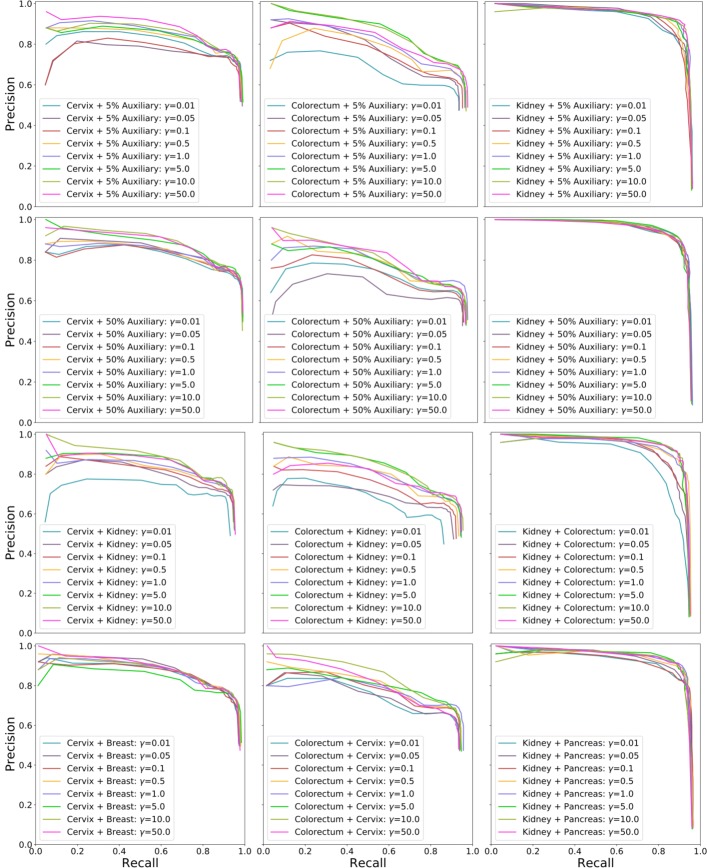Fig. 7.
Precision-recall curves with different γ values on different training data. The top two rows represent 5% (row 1) and 50% (row 2) of mixed auxiliary data respectively, and the bottom two rows denote two different single-source auxiliary data respectively, which are the base datasets producing the lowest (row 3) and highest (row 4) F1 score on the target data in Fig. 4. Each curve is generated by varying the threshold ξ. x/y-axis represents recall/precision. For each curve label of “A+B", A and B represent target and auxiliary data respectively

